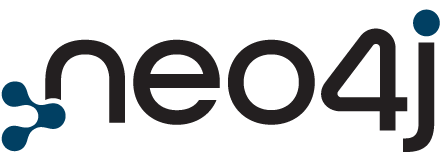DBMS > Microsoft SQL Server vs. Neo4j vs. openGemini
System Properties Comparison Microsoft SQL Server vs. Neo4j vs. openGemini
Please select another system to include it in the comparison.
| Editorial information provided by DB-Engines | ||||||||||||||||||||||||||||||||||||||||||||||||||||||||||||||||||||||||||||||||||||||||||||||||||
| Name | Microsoft SQL Server Xexclude from comparison | Neo4j Xexclude from comparison | openGemini Xexclude from comparison | |||||||||||||||||||||||||||||||||||||||||||||||||||||||||||||||||||||||||||||||||||||||||||||||
| Description | Microsofts flagship relational DBMS | Scalable, ACID-compliant graph database designed with a high-performance distributed cluster architecture, available in self-hosted and cloud offerings | An open source distributed Time Series DBMS with high concurrency, high performance, and high scalability | |||||||||||||||||||||||||||||||||||||||||||||||||||||||||||||||||||||||||||||||||||||||||||||||
| Primary database model | Relational DBMS | Graph DBMS | Time Series DBMS | |||||||||||||||||||||||||||||||||||||||||||||||||||||||||||||||||||||||||||||||||||||||||||||||
| Secondary database models | Document store Graph DBMS Spatial DBMS | |||||||||||||||||||||||||||||||||||||||||||||||||||||||||||||||||||||||||||||||||||||||||||||||||
|
|
|
| |||||||||||||||||||||||||||||||||||||||||||||||||||||||||||||||||||||||||||||||||||||||||||||||
| Website | www.microsoft.com/en-us/sql-server | neo4j.com | www.opengemini.org github.com/openGemini | |||||||||||||||||||||||||||||||||||||||||||||||||||||||||||||||||||||||||||||||||||||||||||||||
| Technical documentation | learn.microsoft.com/en-US/sql/sql-server | neo4j.com/docs | docs.opengemini.org/guide | |||||||||||||||||||||||||||||||||||||||||||||||||||||||||||||||||||||||||||||||||||||||||||||||
| Developer | Microsoft | Neo4j, Inc. | Huawei and openGemini community | |||||||||||||||||||||||||||||||||||||||||||||||||||||||||||||||||||||||||||||||||||||||||||||||
| Initial release | 1989 | 2007 | 2022 | |||||||||||||||||||||||||||||||||||||||||||||||||||||||||||||||||||||||||||||||||||||||||||||||
| Current release | SQL Server 2022, November 2022 | 5.23, August 2024 | 1.1, July 2023 | |||||||||||||||||||||||||||||||||||||||||||||||||||||||||||||||||||||||||||||||||||||||||||||||
| License | commercial | Open Source | Open Source | |||||||||||||||||||||||||||||||||||||||||||||||||||||||||||||||||||||||||||||||||||||||||||||||
| Cloud-based only | no | no | no | |||||||||||||||||||||||||||||||||||||||||||||||||||||||||||||||||||||||||||||||||||||||||||||||
| DBaaS offerings (sponsored links) Providers of DBaaS offerings, please contact us to be listed. | SQLServer Flex @ STACKIT offers a managed version of SQL Server with adjustable CPU, RAM, storage amount and speed, in enterprise grade to perfectly match all application requirements. All services are 100% GDPR-compliant. | |||||||||||||||||||||||||||||||||||||||||||||||||||||||||||||||||||||||||||||||||||||||||||||||||
| Implementation language | C++ | Java, Scala | Go | |||||||||||||||||||||||||||||||||||||||||||||||||||||||||||||||||||||||||||||||||||||||||||||||
| Server operating systems | Linux Windows | Linux OS X Solaris Windows | Linux Windows | |||||||||||||||||||||||||||||||||||||||||||||||||||||||||||||||||||||||||||||||||||||||||||||||
| Data scheme | yes | schema-free and schema-optional | schema-free | |||||||||||||||||||||||||||||||||||||||||||||||||||||||||||||||||||||||||||||||||||||||||||||||
| Typing | yes | yes | Integer, Float, Boolean, String | |||||||||||||||||||||||||||||||||||||||||||||||||||||||||||||||||||||||||||||||||||||||||||||||
| XML support | yes | no | ||||||||||||||||||||||||||||||||||||||||||||||||||||||||||||||||||||||||||||||||||||||||||||||||
| Secondary indexes | yes | yes | yes | |||||||||||||||||||||||||||||||||||||||||||||||||||||||||||||||||||||||||||||||||||||||||||||||
| SQL | yes | no | SQL-like query language | |||||||||||||||||||||||||||||||||||||||||||||||||||||||||||||||||||||||||||||||||||||||||||||||
| APIs and other access methods | ADO.NET JDBC ODBC OLE DB Tabular Data Stream (TDS) | Bolt protocol Cypher query language Java API Neo4j-OGM RESTful HTTP API Spring Data Neo4j TinkerPop 3 | HTTP REST | |||||||||||||||||||||||||||||||||||||||||||||||||||||||||||||||||||||||||||||||||||||||||||||||
| Supported programming languages | C# C++ Delphi Go Java JavaScript (Node.js) PHP Python R Ruby Visual Basic | .Net Clojure Elixir Go Groovy Haskell Java JavaScript Perl PHP Python Ruby Scala | C C++ Go Java JavaScript (Node.js) Python Rust | |||||||||||||||||||||||||||||||||||||||||||||||||||||||||||||||||||||||||||||||||||||||||||||||
| Server-side scripts | Transact SQL, .NET languages, R, Python and (with SQL Server 2019) Java | yes | no | |||||||||||||||||||||||||||||||||||||||||||||||||||||||||||||||||||||||||||||||||||||||||||||||
| Triggers | yes | yes | no | |||||||||||||||||||||||||||||||||||||||||||||||||||||||||||||||||||||||||||||||||||||||||||||||
| Partitioning methods | tables can be distributed across several files (horizontal partitioning); sharding through federation | yes using Neo4j Fabric | Sharding | |||||||||||||||||||||||||||||||||||||||||||||||||||||||||||||||||||||||||||||||||||||||||||||||
| Replication methods | yes, but depending on the SQL-Server Edition | Causal Clustering using Raft protocol | yes | |||||||||||||||||||||||||||||||||||||||||||||||||||||||||||||||||||||||||||||||||||||||||||||||
| MapReduce | no | no | no | |||||||||||||||||||||||||||||||||||||||||||||||||||||||||||||||||||||||||||||||||||||||||||||||
| Consistency concepts | Immediate Consistency | Causal and Eventual Consistency configurable in Causal Cluster setup Immediate Consistency in stand-alone mode | ||||||||||||||||||||||||||||||||||||||||||||||||||||||||||||||||||||||||||||||||||||||||||||||||
| Foreign keys | yes | yes | no | |||||||||||||||||||||||||||||||||||||||||||||||||||||||||||||||||||||||||||||||||||||||||||||||
| Transaction concepts | ACID | ACID | no | |||||||||||||||||||||||||||||||||||||||||||||||||||||||||||||||||||||||||||||||||||||||||||||||
| Concurrency | yes | yes | yes | |||||||||||||||||||||||||||||||||||||||||||||||||||||||||||||||||||||||||||||||||||||||||||||||
| Durability | yes | yes | yes | |||||||||||||||||||||||||||||||||||||||||||||||||||||||||||||||||||||||||||||||||||||||||||||||
| In-memory capabilities | yes | yes | ||||||||||||||||||||||||||||||||||||||||||||||||||||||||||||||||||||||||||||||||||||||||||||||||
| User concepts | fine grained access rights according to SQL-standard | Users, roles and permissions. Pluggable authentication with supported standards (LDAP, Active Directory, Kerberos) | Administrators and common users accounts | |||||||||||||||||||||||||||||||||||||||||||||||||||||||||||||||||||||||||||||||||||||||||||||||
| More information provided by the system vendor | ||||||||||||||||||||||||||||||||||||||||||||||||||||||||||||||||||||||||||||||||||||||||||||||||||
| Microsoft SQL Server | Neo4j | openGemini | ||||||||||||||||||||||||||||||||||||||||||||||||||||||||||||||||||||||||||||||||||||||||||||||||
| News | Run Cypher From Java Integrating Neo4j With LangChain4j for GraphRAG Vector Stores and Retrievers This Week in Neo4j: NODES, Knowledge Graph, Graph Analytics, MCP and more Aura Graph Analytics: A Technical Deep Dive Introducing Neo4j Aura Graph Analytics: Scalable, Easy-to-Deploy Graph Analytics for Any Data Source | |||||||||||||||||||||||||||||||||||||||||||||||||||||||||||||||||||||||||||||||||||||||||||||||||
We invite representatives of system vendors to contact us for updating and extending the system information, | ||||||||||||||||||||||||||||||||||||||||||||||||||||||||||||||||||||||||||||||||||||||||||||||||||
Related products and servicesWe invite representatives of vendors of related products to contact us for presenting information about their offerings here. | ||||||||||||||||||||||||||||||||||||||||||||||||||||||||||||||||||||||||||||||||||||||||||||||||||
| More resources | ||||||||||||||||||||||||||||||||||||||||||||||||||||||||||||||||||||||||||||||||||||||||||||||||||
| Microsoft SQL Server | Neo4j | openGemini | ||||||||||||||||||||||||||||||||||||||||||||||||||||||||||||||||||||||||||||||||||||||||||||||||
| DB-Engines blog posts | MySQL is the DBMS of the Year 2019 The struggle for the hegemony in Oracle's database empire Microsoft SQL Server is the DBMS of the Year | Applying Graph Analytics to Game of Thrones MySQL, PostgreSQL and Redis are the winners of the March ranking The openCypher Project: Help Shape the SQL for Graphs | ||||||||||||||||||||||||||||||||||||||||||||||||||||||||||||||||||||||||||||||||||||||||||||||||
| Recent citations in the news | Why SQL Server Is Still Worth It The year ahead for SQL Server: Ground to cloud to fabric SQL Server 2019 installation for Lab Ola Hallengren’s SQL Server Maintenance Solution in AWS How to Recover Deleted Data from SQL Server without Backup provided by Google News | Neo4j Brings Graph Analytics to Any Data Platform NASA jettisons Neo4j database for Memgraph citing costs Neo4j goes serverless, bringing graph analytics to any data source Latest Neo4j release aims to simplify graph technology Neo4j Launches Industry's First Graph Analytics Offering For Any Data Platform provided by Google News | Huawei OpenGemini cloud series joined OpenEuler Open Source @ Huawei provided by Google News | |||||||||||||||||||||||||||||||||||||||||||||||||||||||||||||||||||||||||||||||||||||||||||||||
Share this page




